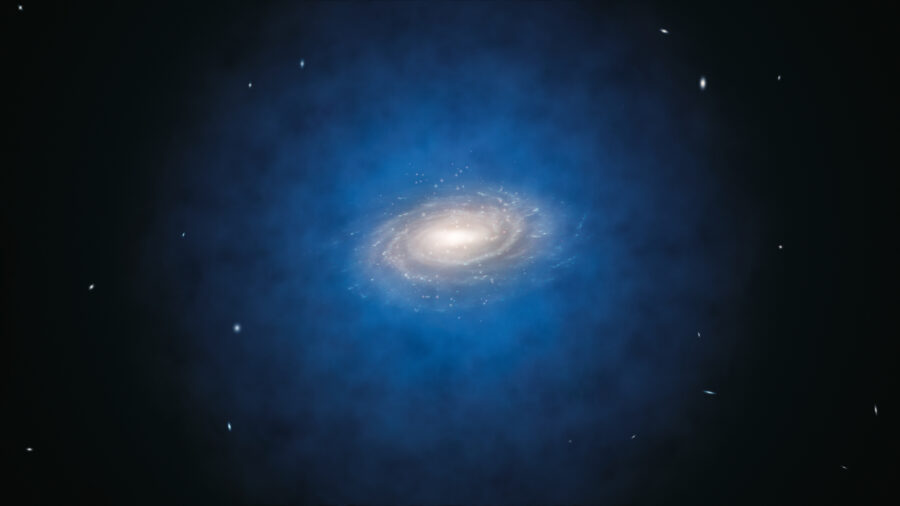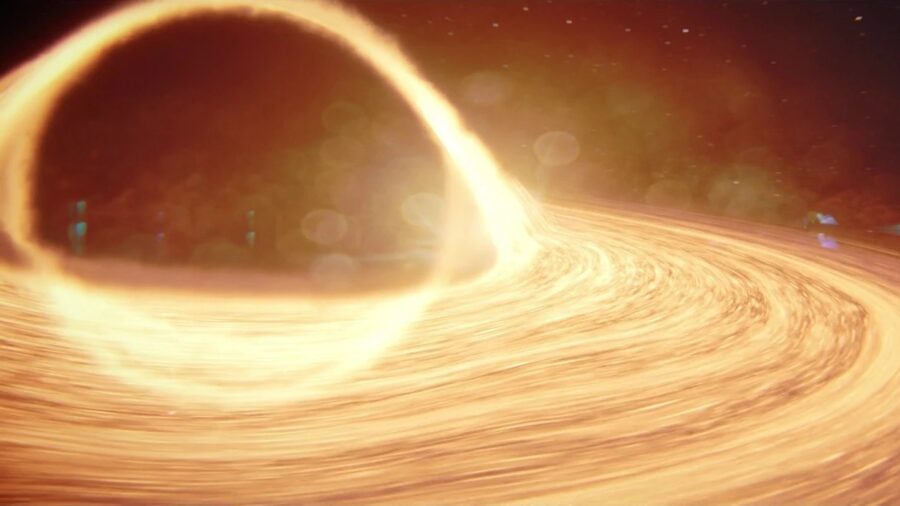Milky Way Galaxy Center Is Dragging In A Mysterious Object
A black hole at the center of the Milky Way is slowly sucking in a gigantic collection of dust and gas, theorized to be a dead star.

The supermassive black hole at the center of our Milky Way galaxy is doing what black holes do and dragging a massive object into its stellar maw. The object, titled X7, has been studied for 20 years now, and it appears that it may disintegrate sometime around 2036. UCLA’s Newsroom reported on the findings, which were gathered by the Galactic Center Orbit Initiative, astronomers from the UCLA Galactic Center Group, and the Keck Observatory in Hawaii.
The black hole in the center of the Milky Way is titled Sagittarius A, or Sgr A, and has had X7 in its orbit for a while now. The question still of where X7 came from remains, and there aren’t any definitive answers at this time. The leading theory from the data observed suggests that X7 may be a massive cloud of dust and gas that was ejected when two stars collided.
According to the researchers, stars colliding and merging near black holes like the one in the center of the Milky Way is a fairly common celestial phenomenon. The stars are pulled together and merged, with the new star hidden by dust and clouds. The ejected gas from these star mergers could possibly explain the origin of an X7 object.
Due to X7’s initial comet-like shape, initial theories proposed that stellar winds or black hole particles could have shaped it. With the elongation from the forces of the Milky Way black hole, the theories have changed to the more recent assumptions that the object is gas and dust from a star collision. The researchers have taken particular interest in X7 because of its ever-changing evolution.

As the Milky Way’s supermassive black hole has pulled X7 closer, the object has dramatically stretched and evolved. The X7 object has roughly the mass of 50 Earths and an orbital path around the black hole of around 170 years. As noted, the researchers think it’s pretty unlikely that it will complete that orbit before it is torn apart and disintegrates from the forces of the black hole.
The black hole at the Milky Way’s center exerts a gravitational effect known as a tidal force on X7, which is what causes the stretch. The tidal force pulls on one side of the object more forcefully than the other, similar to how the moon exerts a tidal force on Earth, creating high tide on the side closest and low tide on the side furthest away. Of course, the tidal force of a black hole is many times more powerful than any moon, and the shape and velocity of X7 have changed drastically due to these powerful forces.
The supermassive black hole at the center of the Milky Way is accelerating X7’s orbit toward it, with X7 currently moving at over 700 miles per second. The researchers will continue to monitor X7 from the Keck Observatory to see how the black hole continues to exert its incredible power on the object. As they learn more, perhaps they’ll be able to further cement their theory about the origin of X7 and learn more about how black holes, which may have computing uses, affect these types of objects.












